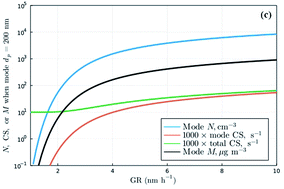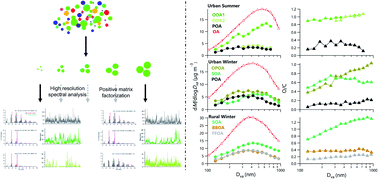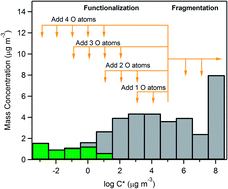Themed collection Aerosol formation in the urban environment

Modelling molecular composition of SOA from toluene photo-oxidation at urban and street scales
Near-explicit chemical mechanisms representing toluene SOA formation are reduced using the GENOA algorithm and used in 3D simulations of air quality over Greater Paris and in the streets of a district near Paris.

Environ. Sci.: Atmos., 2024,4, 839-847
https://doi.org/10.1039/D4EA00049H
Geometries, molecular Rayleigh scattering, Raman and infrared frequencies of polycyclic aromatic hydrocarbons and subunits of graphite studied by DFT methods
A computational investigation of geometric parameters, infrared (IR) and Raman frequencies as well as molecular Rayleigh scattering of polycyclic aromatic hydrocarbons (PAHs), used as models for subunits of larger graphitic materials.

Environ. Sci.: Atmos., 2022,2, 1023-1031
https://doi.org/10.1039/D1EA00105A
Predicting glass transition temperature and melting point of organic compounds via machine learning and molecular embeddings
We developed tgBoost a machine learning model to predict glass transition temperature (Tg) of organic species considering their molecular structure and functionality for better predictions of the phase state of secondary organic aerosols.

Environ. Sci.: Atmos., 2022,2, 362-374
https://doi.org/10.1039/D1EA00090J
The contribution of new particle formation and subsequent growth to haze formation
We investigated the contribution of atmospheric new particle formation (NPF) and subsequent growth of the newly formed particles, characterized by high concentrations of fine particulate matter (PM2.5).

Environ. Sci.: Atmos., 2022,2, 352-361
https://doi.org/10.1039/D1EA00096A
Observed coupling between air mass history, secondary growth of nucleation mode particles and aerosol pollution levels in Beijing
Growth of nucleation mode particles, modulated by air mass exposure to anthropogenic emissions, plays an important role in pollution development.

Environ. Sci.: Atmos., 2022,2, 146-164
https://doi.org/10.1039/D1EA00089F
Size-resolved characterization of organic aerosol in the North China Plain: new insights from high resolution spectral analysis
Size-resolved organic aerosol (OA) analysis elucidated largely different size distributions of primary and secondary OA, and oxidation states between urban and rural sites in different seasons.

Environ. Sci.: Atmos., 2021,1, 346-358
https://doi.org/10.1039/D1EA00025J
A computationally efficient model to represent the chemistry, thermodynamics, and microphysics of secondary organic aerosols (simpleSOM): model development and application to α-pinene SOA
Secondary organic aerosols (SOA) constitute an important fraction of fine-mode atmospheric aerosol mass.

Environ. Sci.: Atmos., 2021,1, 372-394
https://doi.org/10.1039/D1EA00014D
About this collection
This collection is intended to highlight the importance of aerosol particle formation in the urban atmosphere.
Guest-edited by Mikael Ehn, Katrianne Lehtipalo (University of Helsinki) and Paul Winkler (University of Vienna), this broad collection includes studies on new particle formation and growth mechanisms and rates, and the sources, transformations and chemical composition of aerosol precursor vapours, clusters, and particles. The impact of particle formation on air quality, health or climate is also covered.